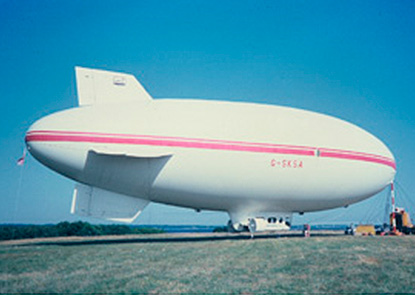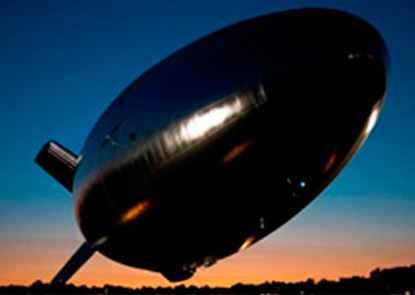Lighter Than Air
LTA (Lighter-than-Air) vehicles, operated both manually and autonomously, have always been a specialty.
The vehicles of interest include the wide range of aerospace craft including airships and other lighter-than-air (LTA) craft. The first work in LTA vehicles at Systems Technology was with the Heavy Lift Airship (HLA). When Mount St. Helen’s erupted in 1980 the U.S. Forest Service began to investigate means of logging forests knocked down by the blast.
This led to the concept of the HLA consisting of four helicopters attached to an airship hull by a tube frame. A prototype, the Piasecki PA-97 Heliostat, was constructed to test the concept. Unfortunately the vehicle crashed ending the program. However, Systems Technology received a contract to develop a nonlinear digital simulation of the vehicle. In addition we performed extensive analysis of the dynamics and control issues of the HLA using the simulation and other analysis techniques.
Development of new Navy airships
After the HLA program, Systems Technology supported the Navy in studies related to the development of new Navy airships. This included a flight test program for the Skyship 500 airship. We developed a custom instrumentation package for the airship for flight test data acquisition. Using vehicle dynamic data from “frequency sweep” inputs and software developed at Systems Technology, stability and control derivatives for the Skyship 500 were estimated using parameter identification procedures.
A concept was developed for implementing descent maneuvers for the HAATM from the lower stratosphere which would maintain the hull pressure difference constant. This is believed to have potential for reducing fatigue failures in the hull material. An optimal control concept, using direct collocation trajectory optimization, was developed using airspeed and blower flow rate as controls in a fixed flight path angle, minimum time descent. An alternative analytical scheme was developed which used airspeed alone with constant blower flow rate and flight path angle to accomplish a constant pressure descent. It was shown that the simple analytical solution could be modified with some basic logic to duplicate the optimal control solution. This simplified the control system and eliminated the need to run the optimal control algorithm in flight.
Addressing wind speed challenges
For solar powered airships such as the HAATM, station keeping at altitude in the lower stratosphere is a major challenge. A key difficulty is that power is limited in these vehicles and thus the maximum airspeed is limited by thrust power available. Various strategies for station keeping were considered in the Post-Thrust-Limit (PTL) flight regime where the wind speed exceeds the maximum airspeed. Several basic schemes for PTL station keeping were examined using direct collocation trajectory optimization. In addition, the meteorology of high wind events in the lower stratosphere was also examined. It was found that an annual phenomenon, the Polar Vortex Breakdown, leads to a period of high winds over much of North America in the winter. During this event which lasts on the order of a week, there appear to be no PTL station keeping schemes that are likely to be viable for most airships intended to operate in the lower stratosphere.
Airship innovations include the ground breaking flight test of the Skyship 500 and optimized high altitude station keeping control system designs.

